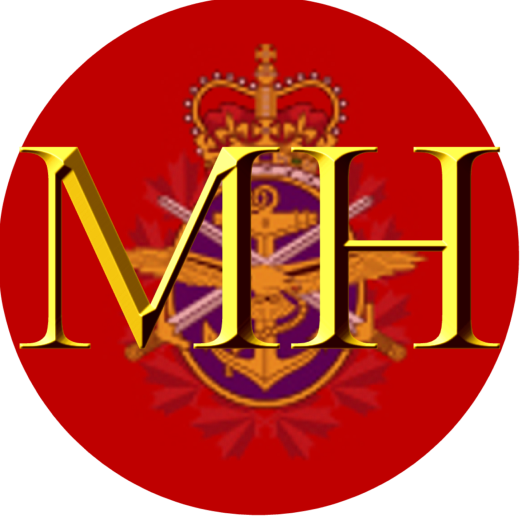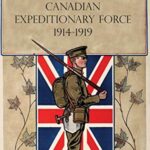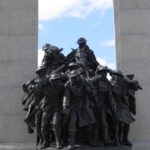On a cold October day in 1899, the streets of Quebec City were alive with the rustle of banners and the murmur of voices, swelling with anticipation. At the waterfront, where the SS Sardinian lay moored, ready to take on its precious cargo, thousands of Canadians gathered to witness an event that had never occurred before in their young nation’s history. For the first time, Canada was sending her sons to fight in a distant land—South Africa, a place of parched plains, high veldt, and stubborn resistance. The men were volunteers, just over a thousand strong, marching as the 2nd (Special Service) Battalion, Royal Canadian Regiment of Infantry (RCRI). At their head was a man who knew something about battles far from home: Lieutenant-Colonel William Dillon Otter, a grizzled veteran of the North-West Rebellion of 1885. He would take these men, green and eager, into the crucible of war, where they would soon face an enemy unlike any they had ever known.
A Young Nation’s First Step Overseas
In 1899, Canada was still feeling its way forward as a nation. Dominion status had been achieved in 1867, but the country’s links to Britain remained strong and inescapable. To many English-speaking Canadians, Britain’s wars were their wars, and the fate of the British Empire was the fate of Canada. The Boer War, though waged over distant issues in South Africa—gold mines and the balance of power in southern Africa—was quickly framed as a struggle between civilization and the forces of resistance that stood in its way. Imperial sentiment ran high in places like Ontario, where loyalty to the Crown was more than a sentiment—it was an article of faith.
But for all the flag-waving and empire-talk in English Canada, not everyone was so enthusiastic about Canada’s involvement. Prime Minister Wilfrid Laurier, with his famously calm demeanor, was acutely aware of the divide between English and French Canadians. French Canada, in particular, had little appetite for imperial wars. Quebec nationalists like Henri Bourassa were clear in their opposition. To them, this was Britain’s war, not Canada’s, and sending young men to fight on foreign soil seemed not just unnecessary but dangerous. Laurier knew he had to tread carefully.
The decision to send Canadian troops to the war in South Africa was a compromise of Laurier’s making, a carefully crafted solution to appease both sides. Rather than committing Canada fully to the conflict, Laurier offered volunteers—men who would serve under the British flag, but without binding the Canadian government too closely to British imperialism. It was a delicate balance, but one that Laurier hoped would keep his country from tearing itself apart over a war that had little to do with its immediate interests.
The Call for Volunteers: An Eager Response
With Laurier’s decision made, the machinery of military mobilization ground into action. The call went out across the country for volunteers, and the response, particularly in the English-speaking provinces, was swift. There was no shortage of young men eager to don the khaki and carry a rifle for king and empire. It was not hard to see why. The late 19th century was an age of imperial adventure, and for many of these men, the idea of going to war in South Africa was thrilling. It wasn’t just about duty—it was about the romance of battle, about far-off places and proving oneself in the fire of combat.
In no time at all, the 2nd (Special Service) Battalion was formed. Drawn from the regular militia and the ranks of volunteers, the battalion was a new unit, created specifically for the South African campaign. Eight companies of infantry were assembled, men from all across the nation, from the bustling streets of Toronto to the quiet villages of the Maritimes. Many of them had never traveled far from home, but they were soon to be part of something much larger—a war half a world away.
At the helm of this battalion was William Dillon Otter, a soldier as rugged and seasoned as the Canadian wilderness he had fought to tame. Otter was no stranger to the demands of command. In 1885, he had led Canadian forces in the suppression of the North-West Rebellion, where he learned firsthand what it meant to fight an enemy that used the land to its advantage. Now, as he prepared to lead Canada’s first contingent of soldiers overseas, Otter knew that his men, eager though they were, would need discipline, training, and strong leadership to survive the harsh realities of war.
October 30, 1899: Departure of the First Contingent
On October 30, 1899, the 2nd Battalion boarded the SS Sardinian at the port of Quebec. The scene was charged with emotion and patriotism. Thousands of Canadians crowded the docks, waving flags and cheering as the soldiers marched up the gangplank. For many in the crowd, this was the first time they had seen their country take its place on the world stage in such a tangible way. These men—dressed in their stiff khaki uniforms, carrying their Lee-Enfield rifles—were the embodiment of Canada’s loyalty to Britain. They were soldiers of a new Dominion, but also of an old Empire.
The soldiers themselves were a mixed lot. Some were veterans of the militia, hardened by years of drill and training. Others were raw recruits, men who had never seen a battlefield but were driven by the desire for adventure and the belief that they were going to make history. What they shared was a sense of duty and, perhaps, a bit of naivety about what awaited them in South Africa.
The SS Sardinian, a modern steamship of the Allan Line, was large enough to carry hundreds of troops and their equipment. For nearly three weeks, the ship would cut through the Atlantic, its decks filled with the sound of marching boots and shouted commands as Otter drilled his men. They practiced maneuvers on the deck, the soldiers growing accustomed to the rhythms of military life as the ship sailed steadily towards Cape Town.
William Otter: A Commander with Purpose
Otter was a man who understood both the demands of command and the weight of history. As he led his men towards an unknown future in South Africa, he carried with him the lessons of the past. He had seen what happened when soldiers were ill-prepared for the kind of irregular warfare that the Boers would wage. The Boers were not a conventional enemy; they were expert marksmen and mounted warriors who knew how to use the land to their advantage. They fought on their terms—guerrilla warfare, ambushes, and hit-and-run tactics.
Otter’s job was to prepare his men for that reality. He emphasized discipline, drilling his soldiers even on the decks of the Sardinian. He knew that they would need to be able to move quickly and decisively in the field, to act as a cohesive unit under fire. Otter also understood the importance of leadership. He was not just a commander; he was a mentor to these men, and he took seriously his responsibility to bring them home, if possible.
Arrival in South Africa and the Path to Paardeberg
When the battalion finally arrived in Cape Town in late November, the war was already raging. The British were struggling to break the sieges laid by the Boers at Kimberley, Ladysmith, and Mafeking, and the Canadians were quickly pressed into action. They would soon be part of Lord Roberts’ grand plan to relieve Kimberley and strike a blow against the Boer forces.
The Canadians’ first real test came in February 1900 at the Battle of Paardeberg, where the Boer general Piet Cronjé had entrenched his forces along the Modder River. The battle would be long, bloody, and decisive—and the Canadians were thrown into the thick of it. On February 27, after days of intense fighting, the Canadians were ordered to storm the Boer trenches. They advanced through a hail of rifle fire, struggling across the rough terrain toward the Boer positions.
It was here, in the heat of Paardeberg, that the 2nd Battalion would prove its mettle. The Canadians fought with determination, taking heavy casualties but pressing forward. By the end of the day, Cronjé had no choice but to surrender, and the victory at Paardeberg was secured. It was a victory that would be celebrated not just in South Africa but across the British Empire. In Canada, newspapers hailed the battalion’s bravery, and the name “Paardeberg” would become a symbol of national pride.
But victory came at a cost. Thirty-one Canadians were killed in the battle, with dozens more wounded. The survivors would carry the scars—both physical and emotional—of the battle for the rest of their lives. Yet, in the minds of many, the sacrifice had been worth it. Canada had proven itself on the world stage, and the 2nd Battalion had earned its place in the annals of military history.
A Legacy Born in the Dust of South Africa
For Canada, the departure of that first contingent in October 1899 marked the beginning of a new chapter. It was a moment when Canada stepped out from the shadow of Britain and began to define its own identity as a nation—one that could contribute to the world’s great conflicts, one that would play its part in the defense of empire, but also one that would eventually grow into its own.
The 2nd (Special Service) Battalion, Royal Canadian Regiment of Infantry would return home after the war with its ranks thinned but its reputation cemented. The battles they fought, particularly at Paardeberg, became touchstones of Canadian military history, monuments to the courage and determination of a young country finding its way. In time, the lessons learned in South Africa would be carried forward to the great wars that lay ahead, where Canada would once again be called to serve on foreign shores.
For now, though, it was enough that they had gone, had fought, and had returned—proud soldiers of a proud nation, forever linked to that October day in 1899 when they boarded the SS Sardinian and sailed into history.



